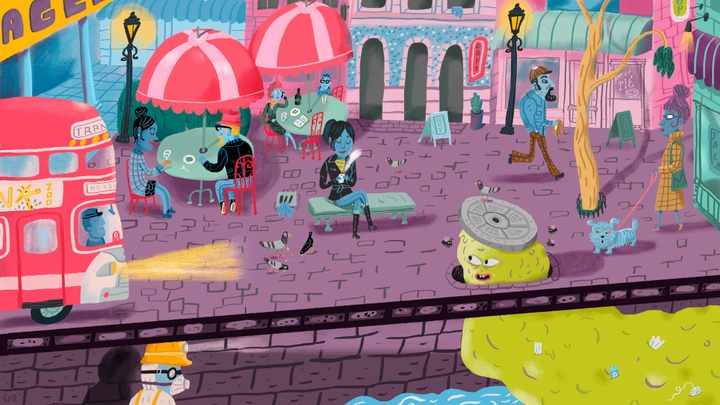
Descend Into the Sewers With London’s Fatberg-Busters
What can we learn from wipes, oils, and fats when they overwhelm the arteries of the modern world?
Excerpted from Sewer, by former Atlas Obscura Senior Editor Jessica Leigh Hester, available November 3, 2022, from Bloomsbury. Used with permission. All rights reserved.
Most of the people wandering the blocks of London’s Covent Garden neighborhood on a chilly evening in September 2019, nursing frothy beverages in the gold glow beaming from café windows or hurrying past sleepy tobacconists and hat shops, probably had no idea that the pipes far below their feet were gunked up with globs of fat. They likely had no clue that as they wandered home, a crew was mobilizing for a long, cold night spent extracting the mess beneath the street.
Andy Howard knew something was awry, but he didn’t know exactly what to brace himself for: The most reliable way to map the status of the sewer system is to remove a maintenance hole cover and dispatch a camera down to look. In the corners of London that buzz with daytime bustle, the overnight shift is a less-disruptive time to descend into the subterranean network of tunnels that carries wastewater around the city. So, around 10:00 p.m., Howard and his crew started setting up on a brick patch near the posh corner of Pall Mall and St. James, next to a sign pointing visitors toward Buckingham Palace.
Leaning against their trucks, Howard and his colleagues staged their gear and incubated their plan. While his crew set up blue gates and orange cones to partition themselves from traffic, Howard perched a coffee cup on the dusty cab of his black Toyota Hilux pickup. With one finger, he squiggled in the dust the meandering route of the Thames and pointed out the sewage works along its course. There are so many points along the way, he said, where things can go wrong. And when they do, he added, “It’s monumental.”
“The system is 150 years old—it can only take so much abuse,” Howard told me. A decade-long sewer veteran, he looks and speaks like Ricky Gervais, but with thick black glasses and less of a sneer. Howard is a technical specialist with Lanes Group, the company that works with the water utility Thames Water to clean nasty blockages that slow or stop the flow. It’s his job to remove gobs of oil, clumps of concrete, and other stubborn things that people have introduced into the underground world.

Purging the pipes is a filthy, unrelenting undertaking—one that confronts anyone who attempts it with a reminder that this subterranean, human-made ecosystem is marked and marred by the mundane choices people make as they move through the world above. Howard and his crew tackle the unsavory proof that our habits are etched under our feet, sometimes with expensive, dangerous consequences.
For as long as sewers have snaked beneath streets, their custodians have battled to stop gunk from building up inside them. Tens of thousands of miles of sewer pipes stretch beneath London and the surrounding areas. Many date to the Victorian era, and though the network is intricate and impressive, it has long been dogged by problems. In the mid-19th century, the city’s sewer system was notoriously foul and prone to springing leaks.
New pipes followed soon after The Great Stink, a menace of 1858 that catalyzed enthusiasm for revamped sewers. The arteries of this expanded network, designed by civil engineer Joseph Bazalgette and colleagues, were often brick and they tended to be more spacious than their predecessors. Many still wind beneath London today. Howard referred to the largest he contends with as “the big boy,” because “it’s big enough to drive a bus down.” Bazalgette and company planned the retooled sewers with a growing city in mind, to cater to a metropolis that might swell to as many as 3.45 million residents—well above London’s population at the time, but less than half of the number today. Bazalgette might have found that mind-boggling. His estimate was already lapped by his death in 1891, when more than 4.2 million people called London home.
Pipes have a life expectancy; even under ideal conditions, they will eventually give up the ghost, rusted, corroded, or otherwise weakened. But dumping grease and trash introduces additional stressors that hasten their decline.
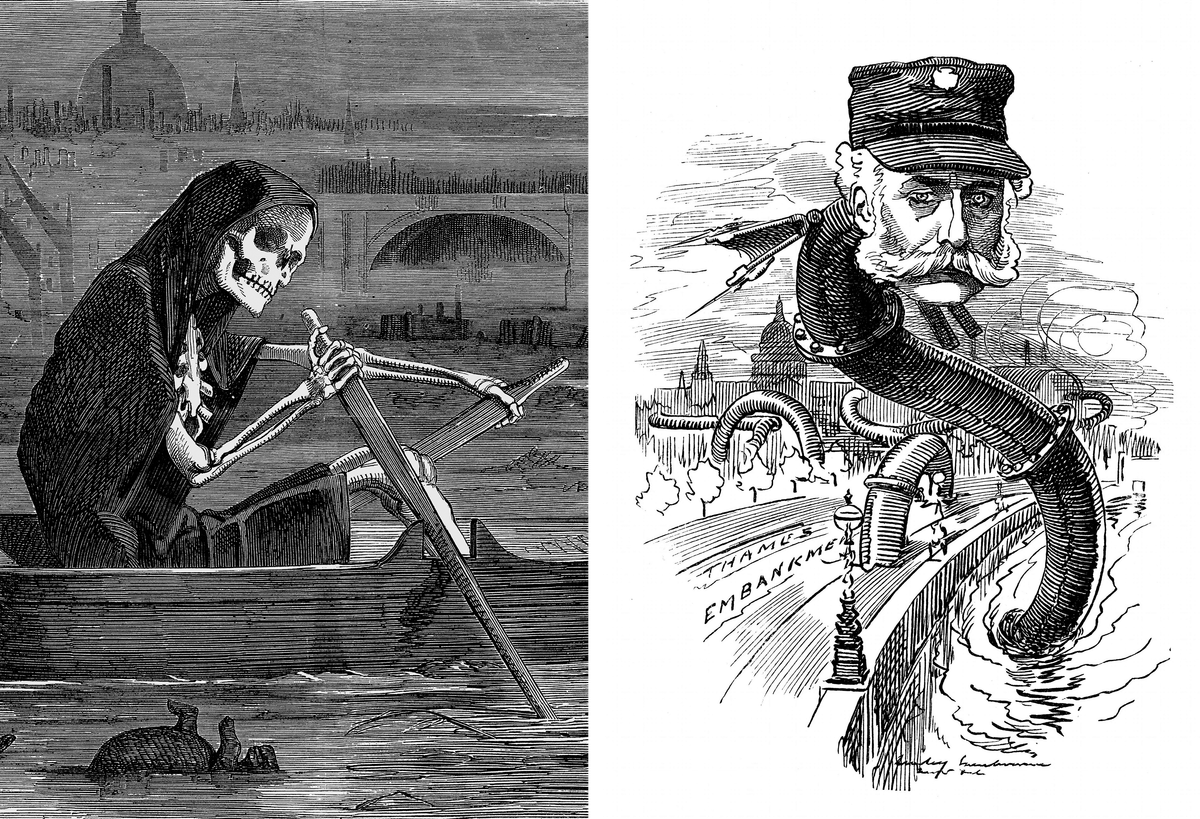
Joel Ducoste, an environmental engineer at North Carolina State University who studies underground accumulations of fats, oils, and grease, also known as “FOG,” has explained that calcium-rich hard water can cause these deposits to saponify and harden, a bit like the scum that builds on the sides of a bathtub. Fatbergs, as these accumulations are popularly known, start small and then sprawl, sometimes growing to be longer than an ocean-crossing plane. The largest of these foul clumps stake out so much of the pipe that water can hardly pass them. London has seen several fatbergs of titanic heft, including one that weighed 11 tons. The masses grow beneath other English towns, too. In April 2021, Anglian Water announced that a fatberg extracted from Southend-on-Sea, in Essex, surpassed 440,000 pounds—roughly the size of two blue whales—and was made up of a slew of wipes, menstrual products, kitchen utensils, and more.
Stickiness begets stickiness—one goopy thing attracts more of the same—so a wet wipe that snags on a corroded pipe becomes a nucleus around which grease and fats gather. It’s theoretically possible to tell what accumulated first and last, but extraction scrambles any hope of decoding this unwanted accretion. To decode the buildups, some researchers have carted bits of fatbergs into their labs to take a closer look.
When crews in Clinton Township, a Michigan community northeast of Detroit, hauled a fatberg to the surface in September 2018, they set some aside for Tracie Baker and Carol Miller. The mass was six feet deep and spanned nearly the whole 11-foot width of the pipe. Bit by bit, the crew calved the blockage into chunks with axes and saws, and fed the pieces into a wet-vac truck. They dolloped two chunks of the fatberg—vividly described by the public works department’s press liaison as a “very thick stew”—into 10-gallon aquarium tanks, which traveled to Baker’s lab at Detroit’s Wayne State University, where she worked as an environmental toxicologist. (She’s now at the University of Florida, in Gainesville.)
The fatberg was an unwelcome addition to the pipes, but Baker thought it also presented a serendipitous opportunity. Since few fatbergs have undergone forensic analysis, she figured it would be interesting to dissect one and describe the stuff inside. It was a time-sensitive proposition; if Baker and Miller were going to collect and study the fatberg, they had to get a move on before it was disposed of. Armed with an $80,000 rapid-response grant from the National Science Foundation, the researchers brought it back to the lab and squared off against a llll so pungent that it stung their eyes until they dripped. When the scientists opened the trash bag that held the fatberg on its journey from the wastewater treatment plant, they spotted flies and wiggling worms. Armed with thick rubber gloves and a fume hood, Baker and Miller, a civil and environmental engineer, recruited some students to help slice and tweeze the thing apart.
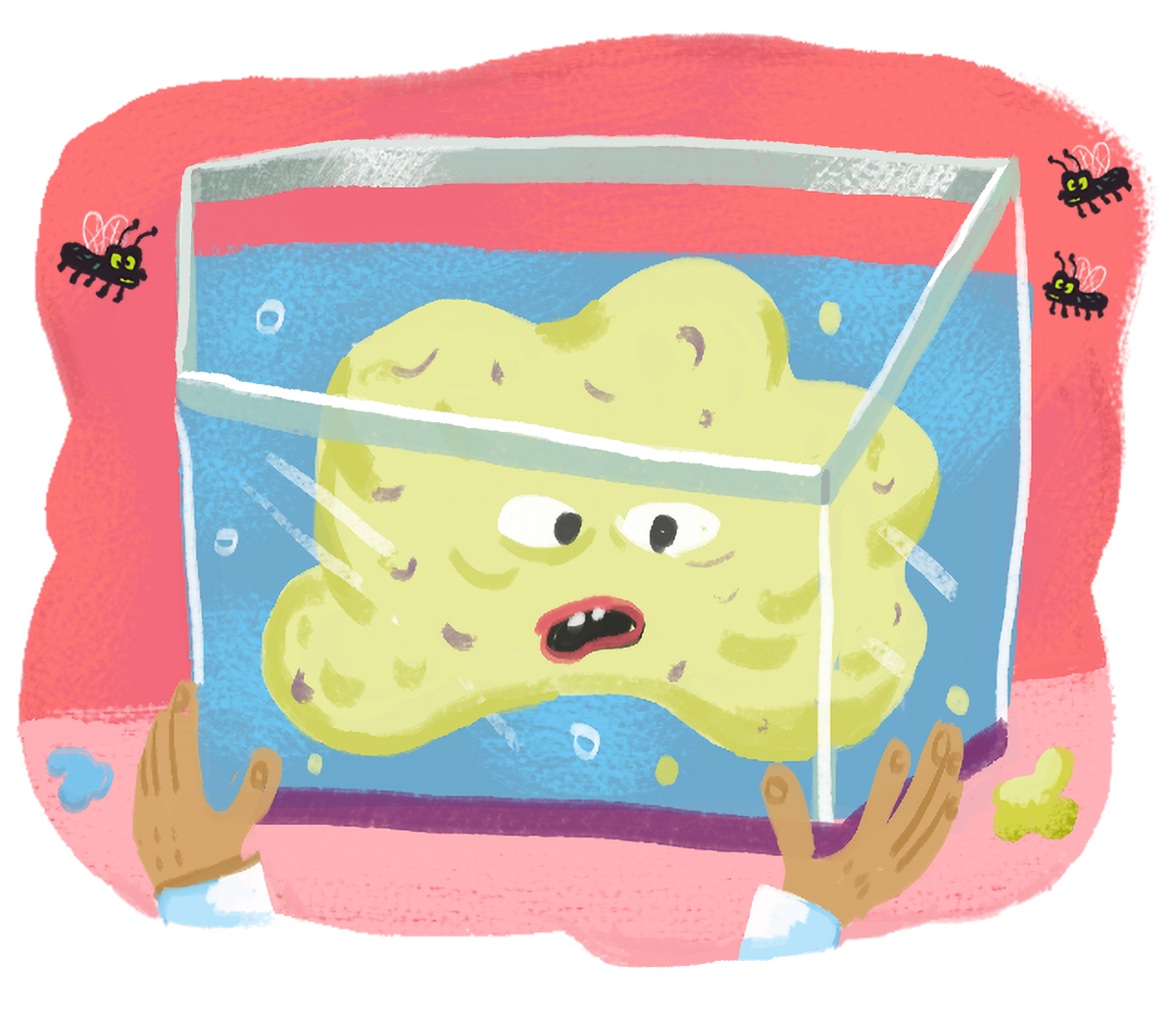
Once the sample had dried out, the team dug in and identified candy wrappers, mustard packets, tampon applicators, coffee stirrers, needles, plastic tops from soda bottles, and more—“things I wouldn’t think of flushing down my toilet, necessarily,” Baker said. They also found tons of wipes. “We obviously knew [they] were going to be in there,” Baker added, though it was impossible to say whether or not the interlopers had been labeled “flushable.”
To learn more about how humans create fatbergs, other teams have studied the masses at the chemical level. Using gas chromatography, environmental microbiologist Raffaella Villa, now at De Montfort University in Leicester, England, analyzed a slab of London’s Whitechapel fatberg to suss out which specific fatty acids mingled in the blob. Her team primarily found palmitic acids, present in palm and olive oil, as well as dairy products and soapy dishwashing liquids. They also detected oleic acid (found in olive oil and almond oil), plus other substances found in cocoa butter, shea butter, and laundry detergent. Because scientists only sample a small chunk of a huge fatberg, any analysis only tells “one bit of the story,” Villa reminded me. But since different oils leave different signatures, Villa suggested that a fatberg on one corner might not be chemically identical to one a few blocks away.
London’s current sewer system is overloaded, and at any moment some of the tubes beneath the city are plugged up. Waging war on fatbergs and other clogs currently costs the United Kingdom tens of millions of pounds each year. Thames Water alone averages 65,000 unclogging missions annually, Howard said, at a cost of £22 million. Work is underway to increase the sewers’ capacity, including the debut of the Thames Tideway, a “super sewer” that will store wastewater that now discharges into the river following especially wet weather.
But that project is still several years from completion. Meanwhile, “We’re always on the back foot,” Howard told me. “There’s never a wait between jobs.” Across the city, many happen simultaneously, and don’t “stop for anything”—sewer work continues through weekends, holidays, and pandemics. At 10:20 p.m. on the Tuesday evening I was at Pall Mall, there were 426 clog-fighters on duty across London, tackling 75 jobs.

On his phone, Howard showed me the interface where the crew logs their jobs. Each worker had to sign in, confirm that they were feeling mentally fit to descend into the sewer (low on light and high on risks, the enclosed space can provoke claustrophobia and anxiety), certify that they had completed the requisite safety checks, and then track their progress. As they go, crews upload photos of the gunk they find. The photos on Howard’s phone were almost exclusively of sewer pipes—clean ones, filthy ones, narrow ones, roomy ones. “Most people have pictures of their children,” the father of four said. “I have pictures of sewers.” His phone held seven photos of his family and 1,200 photos of the world below the streets.
Crews may begin to suspect that a fatberg looms when water levels go wonky in treatment-plant tanks. The most dramatic hint of a spectacular mass—one of the record-smashing behemoths that make the news—might come when murky waters begin rising in basements or on sidewalks. Another method of fatberg detection is more common and less remarkable: Sewer flushers, who perform routine, constant maintenance on the lines, might notice that water is holding higher than it ought to, suggesting a blockage somewhere. Drifting smells offer clues, too. Barry Orr, a graduate student at Toronto Metropolitan University and longtime veteran of Ontario’s sewage works whose colleagues call him the “CSI of the sewer system,” looks for foam in the sewer line. If his team of flushers sees bubbling, “We know it’s grease,” he said. Also, he added, “We can smell it.”
Howard’s crew began the search for a culprit a few days prior, several blocks away. They started beneath Trafalgar Square—visible from Pall Mall in the distance—and then worked their way through. They were there to remove mounded oils and trash, as well as silt and concrete that had washed in from road gullies or gathered near construction sites where workers hosed down their equipment without considering how it might harden underground.
Crew members get their bearings with a 10-character code that corresponds to a specific maintenance hole cover. Each is traceable, and understanding the relationship between them is an exercise in infrastructural genealogy. Pairs of letters indicate whether a given sewer is a main branch or an arterial one, and numbers confirm where the section of pipe falls within a given line. At Pall Mall, the crew were to explore a trunk sewer dubbed Kings Scholar TS003—the third segment in the Kings Scholar line—accessed through maintenance hole cover TQ29803101. They didn’t know what, exactly, awaited them, but it was sure to be gnarly.

To vanquish a fatberg, crews rely on various weapons and techniques. They might hack at the most stubborn ones with pickaxes, for instance, but the first tool is typically water.
The Lanes crew often begins their fatberg fight with a combi, or combination unit, which marries a powerful hose with a strong vacuum. It shoots streams of water from a hose a little more than one inch in diameter at a rate of 124 gallons a minute. The crew might let the water rip three or four times to start, and though they can’t really use finesse—aiming is somewhat imprecise—the hope is that the brute, bucking force will be enough to dislodge the gunk from the pipe’s floor and walls, so a wider hose can siphon it up. The advantage is that humans can hang out above ground, steering this work by guiding a camera and monitoring the feed in a van parked comfortably and safely on the street. The action is recorded so that the team can review the eerie, greenish-yellow footage of the sewers’ innards.
The jet sometimes works fairly well, especially when the fat is soft and not spackled too thick against the sides of the pipes. When the crew studies footage captured after a successful water blast, they might see something reassuringly mundane—ideally, crisp images of the sewer showing nothing but arching, red-and-ochre bricks. Other times, the jet erodes the buildup just enough to carve out space for a narrow stream, still flanked by solid banks of fat. On the camera footage, that fatberg-choked sewer looks something like a shoveled winter sidewalk, surrounded by dirty mounds of snow in various hues of yellowish gray.
Room for a trickle isn’t good enough. Crews want water to course through the pipe again—so when a buildup is really stubborn, someone must go down to battle it. This is a dangerous task, and long before London’s clog-fighting squad ever drops into a real sewer, they do practice runs in a training facility. They practice quick escapes, rescue maneuvers, and first aid. With a breathing apparatus and an ever-dwindling supply of oxygen, they must find their way through an inky-black maze before the air runs out.
It’s an unsettlingly accurate approximation of the real thing. When you’re first lowered into the sewer, you might see a glow seeping in from the streetlamp above you. But hook yourself to a tether and walk 300 feet down the line, away from the hole where you entered, and the light vanishes. The subterranean world is cloaked in a thick, velvety black, Howard told me. “Normal darkness is just like closing your eyes in a dark place,” he said. “Our kind of darkness has no light penetration at all.” If the lights strapped to your uniform are suddenly extinguished, the darkness is overwhelming.
Sewers aren’t friendly places for humans. Some tunnels are so skinny that a person can barely squeeze through. Howard described the atmosphere in the pipes as “hostile and unforgiving,” lousy with potential hazards. A sewer worker can asphyxiate, drown, or wind up trapped in the sticky matrix of gunk. (Crews encounter rats that met unfortunate ends that way, confined in the quagmire.) The gases can kindle fires or fuel explosions. Whoever descends is isolated and maybe submerged in murk, a little like a diver feeling her way beneath waves. The deeper a person descends, the more complicated a rescue would be. Across London, sewer pipes are typically buried between 16 and 39 feet deep, with anything below 26 feet considered especially risky; the Pall Mall sewer is about 20 feet underground.
The night before I met them, Howard’s crew had blasted almost 100 feet of fatberg from the sewer beneath Pall Mall. They’d hoped that would be enough to restore the flow, but the camera revealed otherwise. I hopped into the passenger seat of their van and watched Howard and his guys scroll through the footage while a woman strolled by after a night out, offering the crew a couple of donuts. (They declined.)
Slawomir Punko, a stocky combi operator with a close-cropped beard and a deep reservoir of jokes, wandered to the car to see what he was up against. Some images were clear. But a few yards away, there was that icky, insidious yellow—proof that the fat hadn’t been blasted into oblivion. Someone would have to go in, squatting or kneeling in the muck and using chisels, shovels, or even their hands to pry the fat loose. Physically, the job “does not do you any favors,” Howard said. “It does your back in.” Now in his 50s, Howard still descends when a complex job demands it. But most of the crew members are between 22 and 32, he figured—and his own days of chiseling away at heavy-duty problems such as gobs of dried concrete are numbered.

The Pall Mall mission would have to wait. The nimble crew members who would descend underground were being summoned for a job that took higher priority: A residential property was flooding with sewage, posing a hazard to life and home. That needed to be addressed first, so the team agreed to pack up and come back later. We fanned out. Howard and I hopped into his car and drove to his next stop of the night, where a young sewer worker was suiting up and getting ready to go deep.
Temperature-wise, sewers aren’t terrible. All year long, as poop decomposes, a running sewer holds steady at around 60 degrees Fahrenheit, Howard said. That means “in winter, it is the best place to be,” he joked In summer, he assured me, it’s refreshingly cool down there in the gastric juices of the city’s belly.
The tunnels may be temperate, but standing around maintenance hole covers in the middle of the night can induce goosebumps. By the time Howard and I arrived in Greenwich, some seven miles away, the night felt colder. It was tiptoeing toward 1 a.m., and just a few yards away from the Cutty Sark, a 19th-century clipper ship that’s now a maritime museum, James Stuart was shivering.
A lanky, beaky guy who now goes by Caspa, Stuart had been sewer spelunking for about a year, ever since he left his job driving a forklift. He descends into the sewer two or three nights a week. (Because the crew rotates positions, he’s sometimes up on the surface, working as the “top man” and running safety checks.) Stuart was already outfitted in waders and protective gear, but the autumn air snuck through the layers. To stay warm, he stomped his feet and flapped his arms, which would soon be tucked into rubber gloves. Slawomir’s brother, Miroslaw, was there as well—and like Slawomir, he had jokes. “We’re twin brothers keeping London flowing,” he said. The pair had joined the company on the same day, six years before.
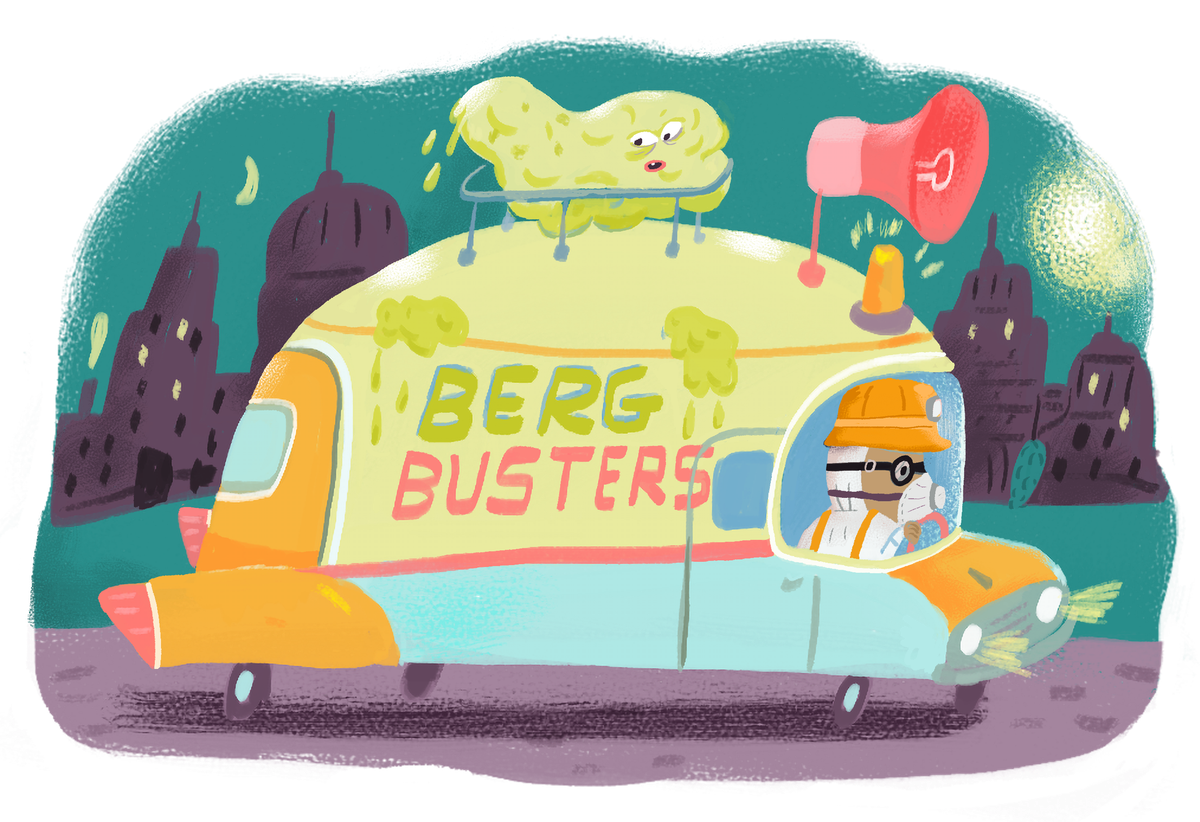
The crew had recently been called out to Greenwich a few weeks prior because a nearby basement was dangerously full of gas. The team traced it back to the source, a fatberg in the U-shaped sewer adjacent to the water. Crews had been cleaning it for two weeks, and had only managed to evict a third of the blockage.
Stuart was lowered down. He was gone only a few minutes, walking around and capturing footage for the team to review back up top. When he resurfaced, Howard, Punko, and the rest of the crew gathered around. No one but me seemed to notice that, when Stuart reemerged, his boots were slick with a yellowy-white film, as though he’d trudged through pomade.
In the sewers, fat is not created equal. Some of it has a “mashed-potato consistency,” Punko explained. Other fat is buttery, and so yielding that someone walking across it might find themselves sinking. Over time, it hardens until it is almost geological, solid as rock.
Howard pointed me over to where one of the maintenance hole covers had been pushed aside. I leaned over the partition and listened. I could hear the water rushing and echoing. One of the crew members explained that sound travels fast and far: If someone bangs on a cover a quarter mile down the road, it sounds like it’s right next to you. I imagined a river curving through a cave, the sounds of sloshing bouncing off the walls.
Then I sniffed.
Of course shit doesn’t smell great, but a fatberg is worse, the team had been telling me. You can live with the smell of poop, Howard said. Over time, it even starts to smell sweet, he claimed. You get used to it.
No one gets used to the stench of a fatberg.
It’s a foul buffet. There’s the stink of rotting eggs, courtesy of hydrogen sulfide. Then, something cooked in old, rancid oil. “It’s the smell of fries, constantly bombarding you,” Howard said. (Maybe—but cold, greasy, and laced with poop.) Gases get trapped beneath a crust on top of the fatberg, Stuart explained. Step too hard and the crust can break, inviting eruptions. Some gases, like methane, are odorless at room temperature. And when other smells are so spectacularly and constantly bad, the nose is no longer a good barometer of danger. Stuart wore a gas meter clipped to the bib of his waders to help him determine when he’d need to bail out.
Punko wandered over to the combi machine and switched it on, while the rest of us went to the open maintenance hole cover and shined our flashlights and headlamps in, to see whether the fat had been shaken loose and was floating past. Nothing much was happening. The stream of water was dark as a moonless river.
Work would continue—and the crew would need to stockpile soap and shampoo. Rinsing off the smell of facetime with a fatberg calls for “a lot, a lot, a lot of soap,” Stuart said. “The fat gets in your pores,” Howard added. “You can smell it for days.” Much as our choices linger in the sewer, the smells stick to people who encounter sewage up close.

Howard put the problem of sewer stewardship to me this way: People think about what kind of light an apartment gets, or what school district it’s in, or whether it has a balcony or a yard. They don’t ask how old the pipes are or whether there have been any blockages, because, in their minds, the sewer is supposed to be something that just works, no matter what we do to it. We’re often asking old pipes to deal with items they were never meant to handle, in a torrent that their designers never anticipated. Howard reminded me that, from London to New York to Singapore, we flush wet wipes, tampons, cement, cooking oil, condoms, and other castoffs that characterize 21st-century urban life, then wonder why our sewers clog to a halt and vomit their contents.
Back at my hotel after I left Stuart and company in Greenwich, I caught a whiff of sulfur as I wiggled out of my coat. The subterranean smell had clung to it, and I hadn’t even been close enough to the fatberg to see it. The stench had drifted up to meet me, and stayed there.
Before, when I considered sewers at all, it was as a waystation—a place something passed through on its way somewhere else. Getting closer to the sewer skewered any notion of the pipes as a place where things disappear and nothing lasts. Fatbergs are a rebuke—a signal that our habits have consequences, and that “out of sight, out of mind” is a fickle dictum and hollow promise. There isn’t much distance between the often-hidden infrastructural world and the more obvious one we engage with each day. The boundary is thin, porous, and liable to overflow.





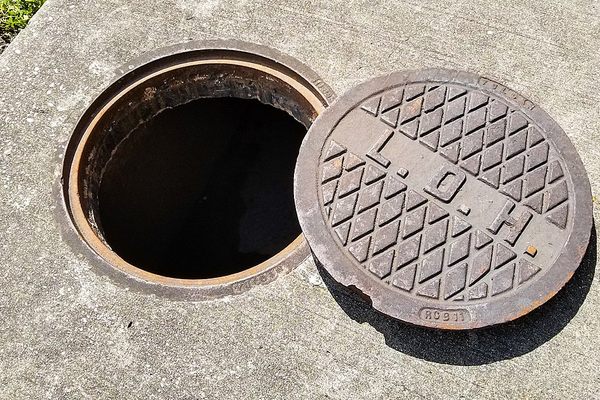











Follow us on Twitter to get the latest on the world's hidden wonders.
Like us on Facebook to get the latest on the world's hidden wonders.
Follow us on Twitter Like us on Facebook